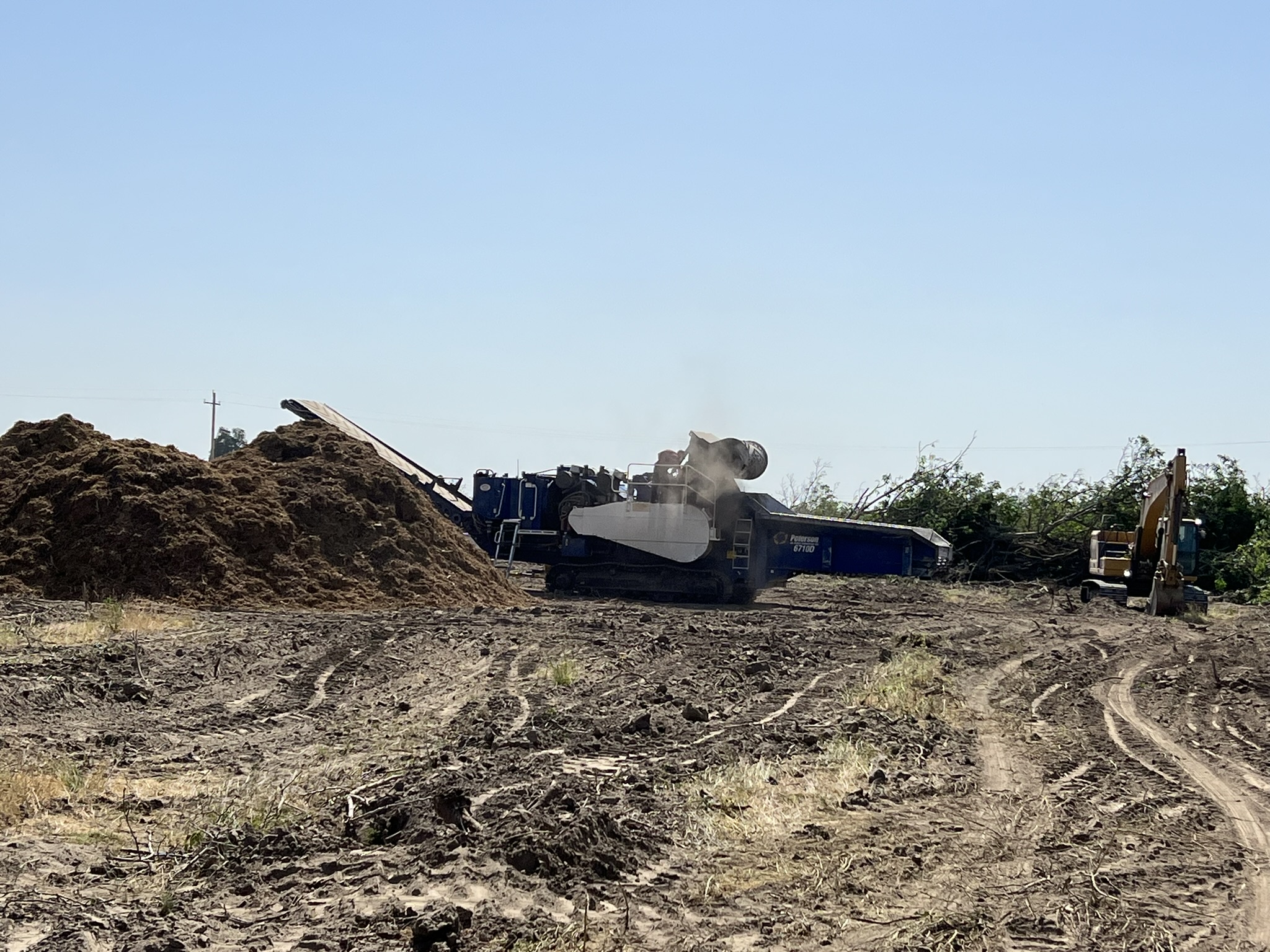
By: Elizabeth J. Fichtner, PhD. UCCE Farm Advisor, Tulare and Kings Counties, and Mae Culumber, PhD. UCCE Farm Advisor, Fresno County.
Have you noticed entire mature orchards reduced to piles of woodchip over the course of just days? What you are witnessing is a process called “whole orchard recycling,” a method of facilitating the decomposition of orchard biomass to return the carbon and nutrients that are stored in the trees to the soil. Growers use this technique to improve soil quality and preserve the air quality in California’s Central Valley.
The landscape of Ivanhoe and the greater Tulare County region is dramatically changing as a result of orchard removal. The disappearing walnut acreage is particularly significant in this area because walnuts are the original nut crop of Tulare County, with plantings dating back to the 1930s. Several factors have contributed to the removal of orchards in the region, including a cataclysmic reduction in nut prices (particularly walnuts), and the imposition of regulations on groundwater use.
The economics of walnut production have been negatively impacted by trade disputes, new international competitors in walnut production, strikes at the ports, and most recently the poor quality of the 2022 crop, a likely consequence of the late summer heatwave prior to harvest.
Last, many historic walnut-growing areas are referred to as “white lands” areas in groundwater subbasins not covered by agricultural irrigation districts, where irrigation is supplied solely from the pumping of groundwater. Recent regulations imposed on groundwater pumping have necessitated the removal of permanent crops on some of this acreage.
When an orchard has reached the end of its economically-viable life, growers are faced with the task of removing the woody biomass. Historically, trees would be pushed over and burned; however, burning on a large scale adversely affects air quality in the region. Additionally, burning immediately releases the nutrient-rich ash to the soil and the stored carbon to the air as carbon dioxide, a greenhouse gas.
Whole orchard recycling allows a significant portion of the carbon produced by photosynthesis over the lifetime of the orchard to be returned to the soil rather than lost to the environment. Also, the nutrients stored in the biomass are gradually released to the soil as the wood chips decompose, thus contributing to the nutritional demands of successive crops.
Whole orchard recycling is accomplished by chipping the woody biomass and spreading the chips over the orchard area. The chips are then incorporated into the upper surface of the soil where the soil microbial community breaks down the chips. As the microbes die, the nutrients stored in the microbial biomass (ie. the bodies of millions of bacteria and fungi) are returned to the soil.
After whole orchard recycling, the land can be left fallow or replanted with perennial or annual crops depending on the market and water availability. Although the local landscape is dramatically changing, we can appreciate that growers are ensuring that the benefits of agricultural by-products are not lost from our local agricultural ecosystem, and we can look forward to observing the future phases of land-use in the region.

Comments are closed.